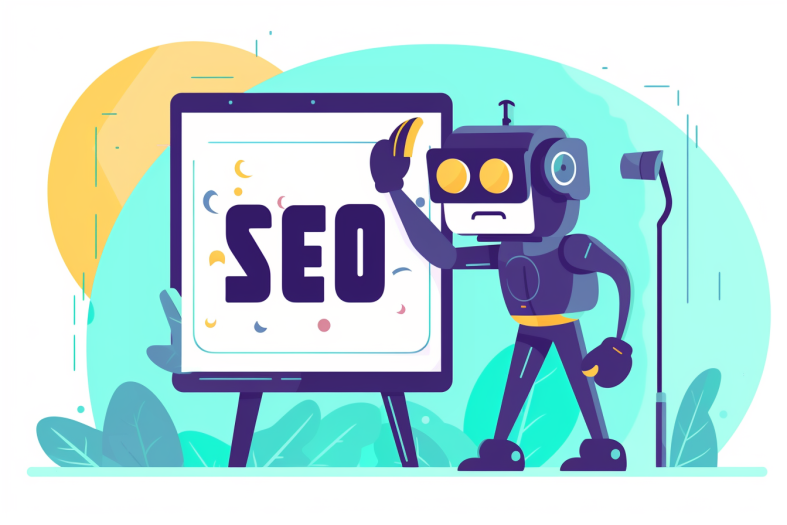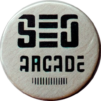As a website owner, you have probably worked day and night to make your web pages appealing to the audience with enriching content and beautiful imagery. But did you know that just like the textual content, the images can also help your website rank higher on search engines?
Remember, the pictures are not there for aesthetics. You may simply copy and paste the images on your website randomly. However, when added strategically using the best optimization strategies, you can boost your site’s SEO significantly.
According to research, over 20% of traffic comes through image optimization. This makes it a crucial aspect of your overall SEO efforts that should not be neglected. In this article, let’s explore more!
Get ready to make your website better and win the SEO game!
What Is SEO Image Optimization?
Image optimization is the process of reducing your files as much as possible so they load seamlessly for the audience. The goal is to minimize the data an image uses while maintaining its visual quality.
SEO is one of the long-term marketing strategies, and image optimization is a fundamental part of it. Like the SEO you do for your site using keywords and meta tags, your website’s images are optimized with the help of alt text, sitemaps, adequate file size, and relevancy. Below, let’s look at the top nine tips to maximize your SEO impact through image optimization.
- Choose Relevant and Quality Photos
The biggest factor distinguishing your site and brand from others is the type of images you use on your website. Hundreds of sites on the internet use the same bland-style photographs that provide little value to their audience.
If you want your website visitors to take you seriously, opt for a personalized approach and use unique images that resonate with the content. You can also acquire high-quality stock photos from reliable sources. However, ensure these images are relevant to your content and effectively convey your message. Search engine filters present on these websites are very helpful in narrowing down your preferences to visuals that are unique to your copy.
- Use Compressed Pictures
User experience is crucial when choosing photos for your website. You don’t want your users to be burdened with slow loading times. But you don’t want them to compromise by using low-quality pictures. Pictures take up to 21% of your website’s weight, so optimizing them accordingly is critical. When you do find unique images, make sure they are compressed and don’t slow down your site’s processing time.

It is also important to choose the right format for your pictures. There are two types of image formats that you need to know about:
- PNG: The PNG files boast better quality but increased image size. They are ideal for transparent images, like logos, icons, and graphics.
- JPEG: The JPEG format is properly used for photographs with many colors and gradients. They also have reduced file size. However, this can result in a loss of image quality.
The proper blend of image format and compression can significantly improve your website’s performance and user-friendliness. Ignoring the process can frustrate the visitors and impact your page’s bounce rate.
- Name your Images Properly
According to Google’s SEO Guide, you should name your images with descriptive file names. When you save a file on your computer, you must have noticed generic titles with a random numerical format. For example, a mobile phone picture can be saved as ‘IMG001.jpg’ by default.
However, this does not help Google understand what your image is about. Instead, make it detailed, such as “man-holding-mobile-phone” to provide accurate information to the search engine crawlers. This allows them to easily identify the content of your picture and rank it accordingly.
You can also use keywords when naming the images, but avoid keyword stuffing.
- Create Alt Tags

Alt tags or alt text, short for alternative text, is the most important step in your SEO image optimization strategy. The alt text describes your pictures and helps Google understand the context of the image.
The alt text box also provides a textual description if the image fails to load for any reason. They are mandatory per the American Disabilities Act for individuals who cannot view the images and use screen readers to access your pages.
When creating alt tags, make them concise but descriptive. For example, ‘black smartphone with a high resolution is a perfect alt text for the mobile phone picture.
- Submit Image Sitemap
Besides alt tags, you should also focus on image sitemaps. It is a specialized type of directory used in SEO to provide search engines with information about the images on your website.
Here is what an image sitemap typically includes:
- Image URLs: It lists the web addresses of all the images on your website that you want search engines to index.
- Image Tags: They can contain tags or categories for each image. These help the search engines to understand the context and relevance of images.
- Image Metadata: Image sitemaps can include additional information about each image, like its title, description, caption, and geographical location.
The primary purpose of an image sitemap is to make it easier for search engines to discover, crawl, and index the images on your website. This also plays a crucial role in enhancing the user experience, as users can find your images easily in search results.
- Avoid Copyright Infringement
The last thing you want is Google sending you a copyright infringement lawsuit. When using images from other sites, ensure you are not using copyrighted images without permission. If you mistakenly use a copyrighted image, the respective owner may sue you under the Digital Millennium Copyright Act (DMCA).
To overcome this problem, you should try to use custom pictures that are shot specifically for your brand. If this is not possible, you can access reputable stock image libraries. Stock libraries have teams that watch for people using their content incorrectly or breaking copyright rules. This keeps both creators and users safe from legal problems.
- Optimize your Images for Mobile Phones

Mobile optimization is a factor you can’t overlook in today’s digital landscape. According to Statista, more than 58% of all website traffic is generated from mobile phones. Optimizing the pictures for phones ensures the images are displayed correctly on smartphones and tablets.
To achieve this, you should employ the mobile responsiveness principle. This automatically adapts your website’s images to various screen sizes and orientations so they look impressive and load efficiently on every device.
- Use Content Delivery Network (CDN)
A Content Delivery Network is another effective tool that improves your site’s optimization. It is a group of servers distributed worldwide, designed to deliver web content quickly to users based on their proximity. For example, if your website is based in Asia and a user from the USA accesses your page, they will face delays in loading times.
However, when a webpage is optimized with a CDN, the contents will be delivered from the server closest to the USA.
Also, the CDN keeps copies of your pictures in their database to be loaded quickly when requested without going back to the main computer. This helps your website load even faster, especially during traffic spikes and high-demand periods.
- Incorporate Lazy Loading

The lazy loading process defers the loading of images that are not immediately visible on the user’s screen when they first access a webpage. Instead, only the images present on the screen or at the audience’s viewpoint are loaded.
The remaining pictures are loaded as the viewers scroll down. This way, the webpage loads faster at the beginning, and you don’t have to wait for all the pictures to load at once.
The Bottom Line
Pictures do more than look pretty. With a strategic approach, the images can engage your audience, bring in more visitors, and even make sure Google thinks highly of your website. In a world where every website fights to get noticed, following the above tips to improve your site and pictures can help. After all, you are not just making your website visually appealing but also ensuring its success in a highly competitive online environment.
